Office Scripts Preview Rolling Out Now
8 January 2020
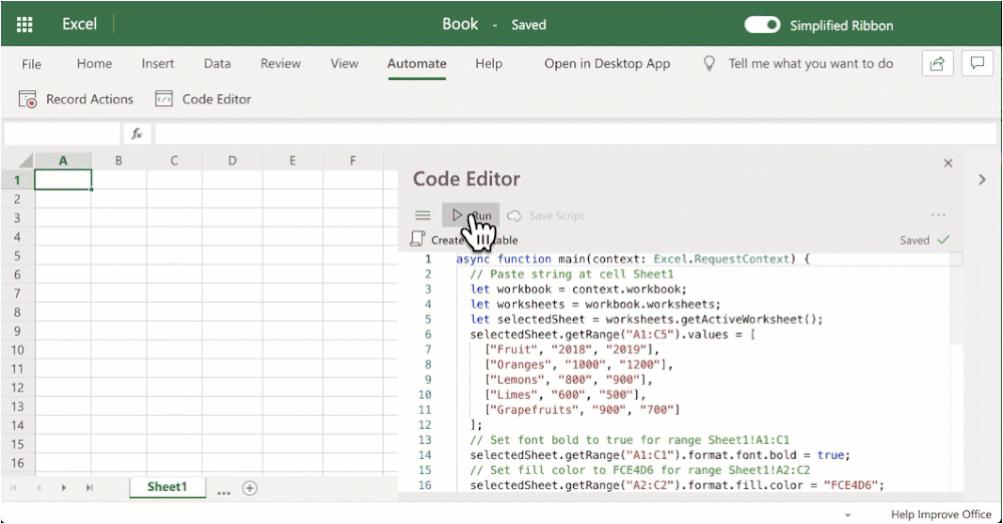
A public Preview of Office Scripts in Excel on the web has recently been announced by Microsoft. Office Scripts is a feature that enables you to record scripts and automate tasks. It is rolling out gradually, but it’s well worth a look as it will allow you to create new automations using the script recorder and editor functionality on the web.
The problem with VBA is that the internet and VBA do not play nicely together. This is where Office Scripts comes in: with this new feature, end-users may record all actions performed such as renaming the worksheet, inputting the data, and changing the format etc. inside an online Excel workbook, and save the steps as a script. The script generated may then be used with Power Automate (formerly known as Microsoft Flow) or be integrated with another workflow. Furthermore, once the script is created, users may share it with others and a central management system, which can facilitate the sharing of all created scripts.
The new feature is incorporated in the Automate tab on the Ribbon for Excel on the web:

From here, it is simple to Record and Edit:
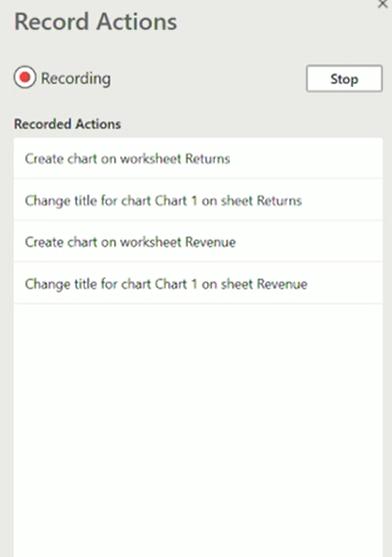
It’s easy to confuse Office Scripts with the similarly-named Script Lab, especially as the latter is now available for Excel on the web. Two and a half years ago, Microsoft released Script Lab, a little-known add-in for Excel (and other applications).
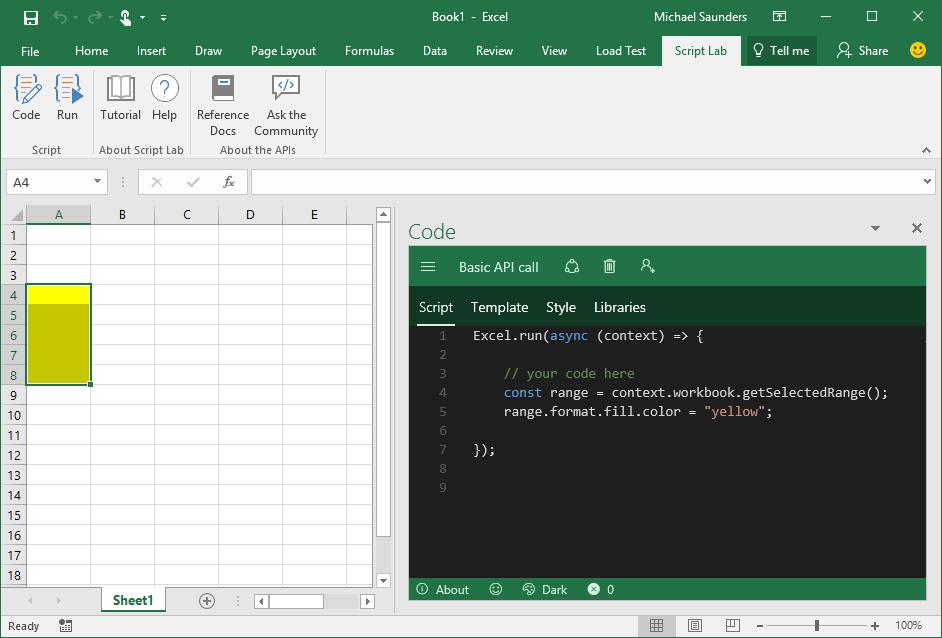
Script Lab was created as a tool for anyone who wanted to learn about writing add-ins for Excel, Word or PowerPoint. Microsoft were – and still are – keen to push the JavaScript application program interface (API), as they see it as the technology needed for building Office add-ins that run across platforms.
Script Lab has three main features:
1. Code in a pane beside your spreadsheet
2. Run the code in another pane beside the editor
3. Share your snippets elsewhere.
The problem was, it was really aimed at expert users and, quite frankly, didn’t really take off. Office Scripts, on the other hand, is aimed at the “point and click brigade”, of which this author is a fully signed up member!
Office Scripts will be rolling out – gradually, alas – over the next few weeks to Excel users who have Office 365 E3 and E5 licenses. This allows Microsoft to gather feedback and react as necessary. During this initial Preview, Office Scripts will only be available in Excel on the web, although it will extend to other Excel media in due course.
In order to obtain access, Office Scripts will need to be enabled through the admin center (sic) and will become visible in tenants as the feature rolls out. The feature may be enabled by following the steps below:
- Go to admin center
- Select Settings -> Settings (or Settings -> Services & add-ins in the new admin center, depending upon your interface) and then choose Office Scripts from the list.
Check the ‘Let users automate their tasks in Office on the web’ box in the Office Scripts panel and save changes.
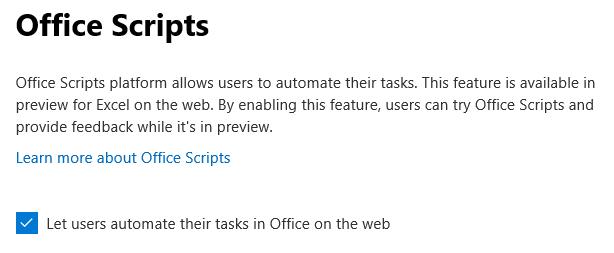
Note: Office Scripts is not currently available in Internet Explorer (ironically).
Office Scripts is currently in what is known as the Targeted release (previously known as First Release). If you have enabled Office Scripts, but do not yet see the Automate tab, you may need to wait until the feature is released to your organisation.
Any new release is first tested and validated by the feature team, then by the entire Office 365 feature team, followed by all of Microsoft. After internal testing and validation, the next step is a Targeted release to customers who opt in. At each release ring, Microsoft collects feedback and further validates quality by monitoring key usage metrics. This series of progressive validation is in place to make sure the worldwide-release is as robust as possible. The releases may be visualised as follows:
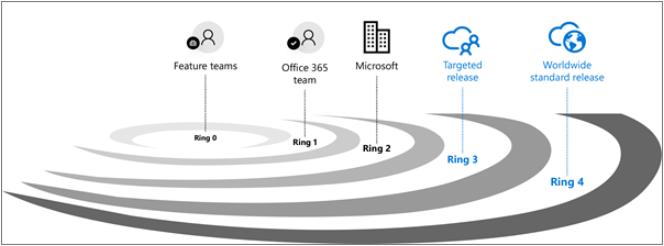
If you are an administrator and wish to swap to Targeted release:
1. In the admin center, go to the Settings -> Organization profile page
2. Next to Release preferences, select Edit
3. To disable targeted release, select Standard release, then select Next, and say Yes to the confirmation. Skip to the step 7
4. To enable targeted release for all users in your organization, select Targeted release for everyone, then select Next, and say Yes to the confirmation. Skip to step 7
5. To enable targeted release for some people in your organization, select Targeted release for selected users, then select Next, and say Yes to the confirmation
6. Select Add people to add users individually. Search for their names and select + to Add.
7. When you're done adding users, select Save and then Close.

